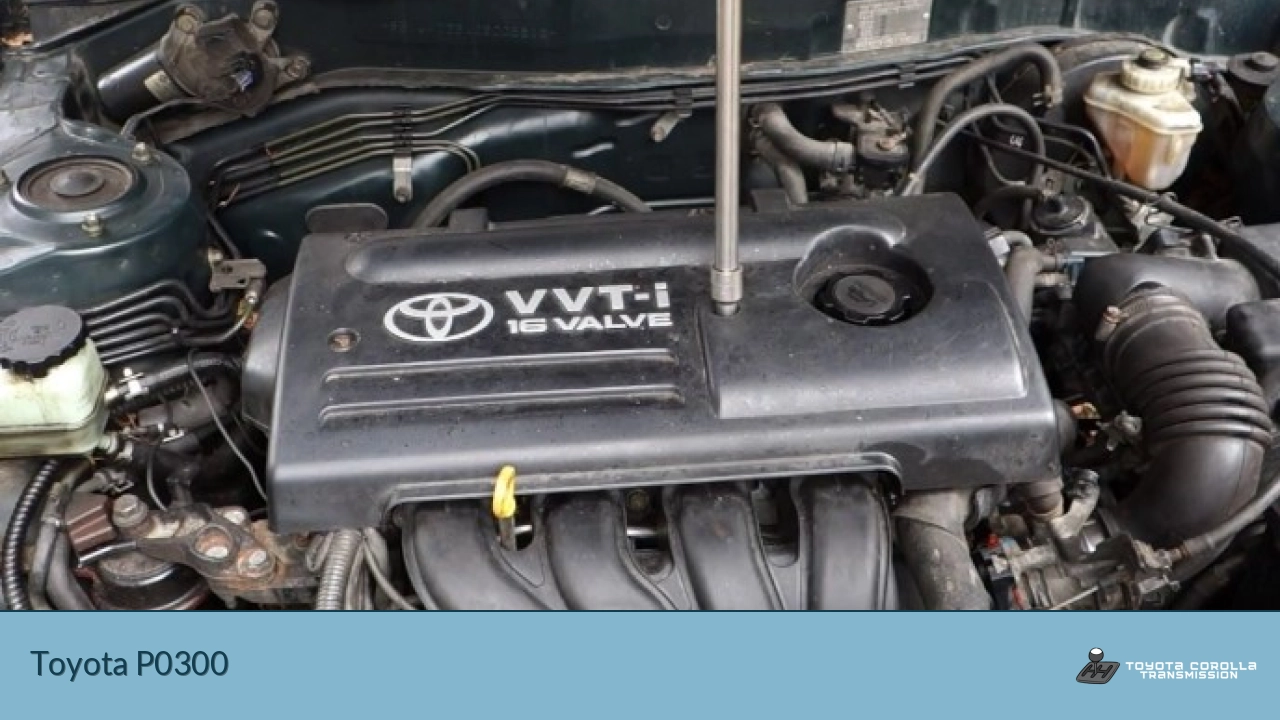The P0300 error code is a common issue that plagues many Toyota owners. This diagnostic trouble code indicates a random or multiple cylinder misfire, which can lead to a host of problems if left unaddressed. While it may sound alarming, understanding the causes, symptoms, and solutions can help you tackle this issue head-on and keep your Toyota running smoothly.
| Aspect | Details | Possible Solutions |
|---|---|---|
| Causes | Faulty spark plugs, ignition coils, fuel injectors, vacuum leaks | Replace worn components, fix leaks |
| Symptoms | Engine vibration, reduced power, poor fuel economy | Address underlying issues promptly |
| Severity | Moderate to high, can lead to catalytic converter damage | Seek professional diagnosis if unsure |
Understanding the P0300 Code
The P0300 code is triggered when your Toyota’s engine control module (ECM) detects a misfire in multiple cylinders or a misfire that seems to move between cylinders. This occurs when the ECM notices a significant change in crankshaft rotation speed, indicating that one or more cylinders are not contributing to engine power as they should.
Common Causes of P0300
Several factors can contribute to the P0300 code appearing in your Toyota:
- Ignition System Issues: Worn spark plugs, faulty ignition coils, or damaged spark plug wires can prevent proper combustion.
- Fuel System Problems: Clogged fuel injectors, low fuel pressure, or a malfunctioning fuel pump can disrupt the air-fuel mixture.
- Vacuum Leaks: These can cause an imbalance in the air-fuel ratio, leading to misfires.
- Engine Mechanical Issues: Low compression, worn piston rings, or damaged valves can result in misfires.
- Sensor Malfunctions: Faulty oxygen sensors or mass airflow sensors can provide incorrect data to the ECM, causing improper fuel mixture.
Symptoms of P0300 in Toyota Vehicles
When your Toyota experiences a P0300 error, you may notice several symptoms:
- Engine vibration or roughness, especially at idle
- Reduced power and acceleration
- Poor fuel economy
- Illuminated check engine light, which may flash in severe cases
- Difficulty starting the engine
- Unusual exhaust odor or increased emissions
Diagnosing P0300 in Your Toyota
Proper diagnosis is crucial for effectively addressing the P0300 code. Here’s a step-by-step approach:
- Use an OBD-II Scanner: Connect a scanner to read the specific code and any accompanying codes.
- Visual Inspection: Check for obvious issues like damaged wires or vacuum leaks.
- Spark Plug Examination: Remove and inspect spark plugs for wear or damage.
- Fuel System Check: Verify fuel pressure and injector operation.
- Compression Test: This can reveal internal engine problems causing misfires.
- Sensor Testing: Use a multimeter to check sensor functionality.
Fixing P0300 in Toyota Vehicles
Once you’ve identified the root cause, you can proceed with the appropriate fix:
- Replace Spark Plugs and Ignition Coils: Often, this is the simplest and most effective solution.
- Clean or Replace Fuel Injectors: Clogged injectors can cause misfires.
- Repair Vacuum Leaks: Use a smoke machine to locate and fix any leaks.
- Address Engine Mechanical Issues: This may require more extensive repairs, such as replacing piston rings or valves.
- Replace Faulty Sensors: Ensure all sensors are functioning correctly.
Preventing Future P0300 Codes
To avoid recurring P0300 issues in your Toyota:
- Follow the Maintenance Schedule: Regular tune-ups can prevent many issues that lead to misfires.
- Use Quality Parts: Opt for OEM or high-quality aftermarket components.
- Address Issues Promptly: Don’t ignore minor symptoms that could lead to more significant problems.
The Impact of P0300 on Your Toyota’s Performance
Ignoring a P0300 code can have serious consequences for your Toyota. Continued misfires can damage the catalytic converter, a costly component to replace. Additionally, you may experience decreased fuel efficiency and engine power, making your vehicle less reliable and more expensive to operate.
When to Seek Professional Help
While some causes of P0300 can be addressed by DIY enthusiasts, others require specialized tools and expertise. If you’re unsure about diagnosing or fixing the issue, it’s best to consult a qualified mechanic or Toyota specialist. They can perform advanced diagnostics and ensure that all related systems are functioning correctly.
FAQs
What does the P0300 code mean for my Toyota?
It indicates a random or multiple cylinder misfire, which can affect engine performance and efficiency.
Can I drive my Toyota with a P0300 code?
While possible, it’s not recommended as it can lead to catalytic converter damage and decreased performance.
How much does it cost to fix a P0300 code in a Toyota?
Costs vary widely, from $100 for spark plug replacement to over $1000 for major engine work.
Will a P0300 code clear itself?
It may clear temporarily, but will likely return if the underlying issue isn’t addressed.
How often should I check for engine codes in my Toyota?
Regular checks during maintenance or when the check engine light appears are recommended.

